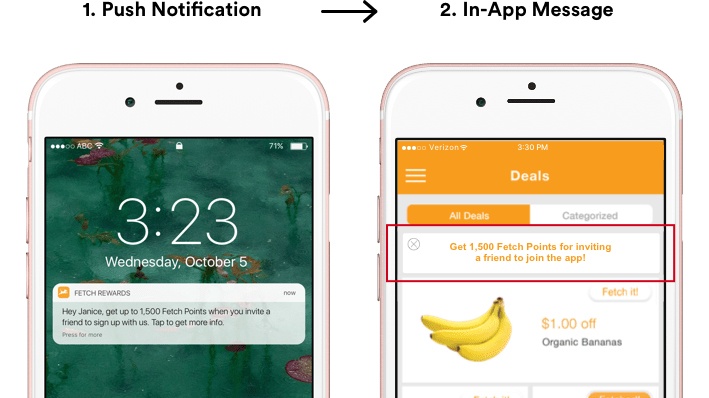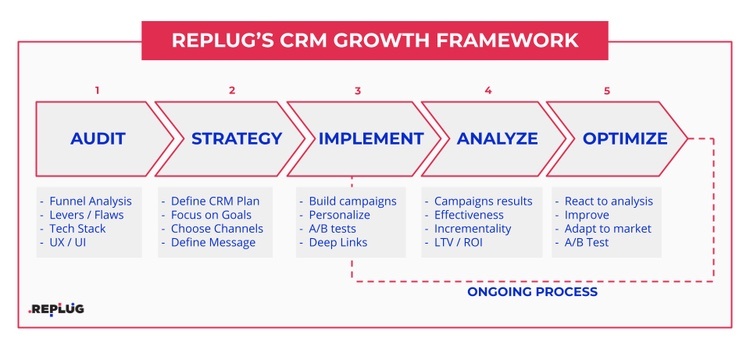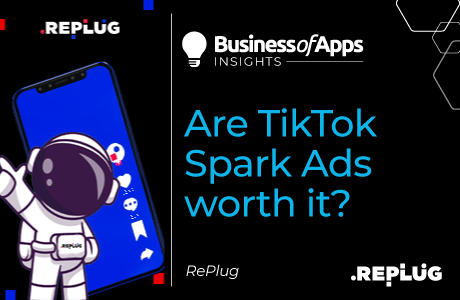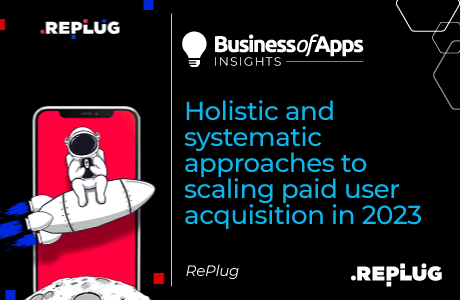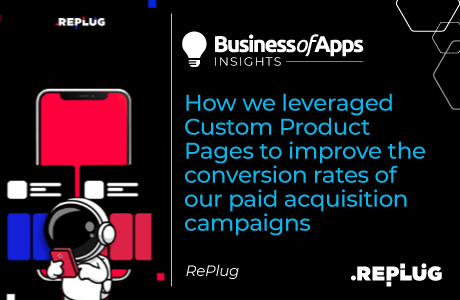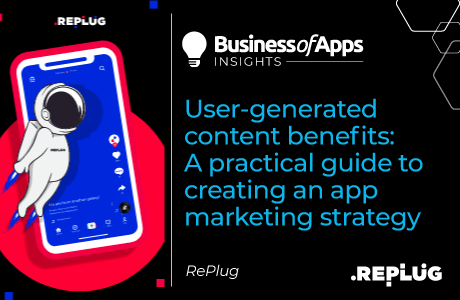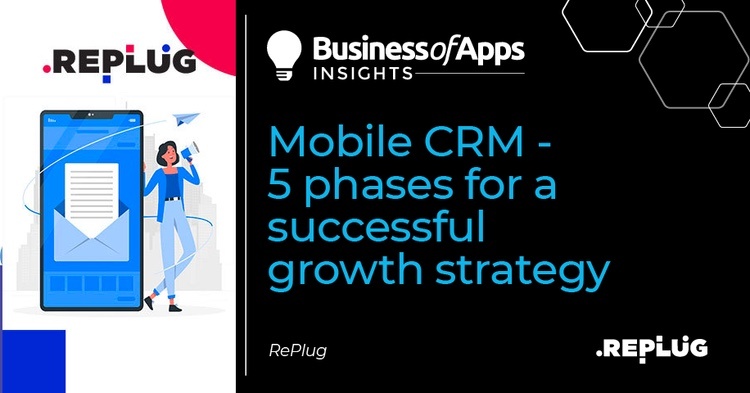
In the past years the topic of CRM – Customer Relationship Management – has gained more attention for many companies operating in the mobile industry.
Given the increasing cost of mobile user acquisition, retention strategies became increasingly important to engage the existing audience, with the aim of improving ROAS and fidelization. Remember the saying “It costs 7 times more to acquire a new user than to retain an existing one”?
If we think that 79% of users who installed an app use it only once, and that after 3 months only 1.7% are still active (source Leanplum), the picture is even more dramatic. Mobile companies invest a great deal acquiring users who, at the end, do not interact with their products.
For this very reason, mCRM should play a centric role in our growth strategy.
What is mobile CRM?
With mobile CRM we refer to all the communication and engagement activities with those users who install an app. The communication can be performed through different messaging channels on mobile devices (and in some cases complementing desktop activities), both inside and outside the app, with the aim of increasing the existing audience engagement.
Why is mobile CRM important?
Mobile CRM allows us to communicate with our target audience whenever and wherever they are, maximizing location and real-time communication. Thanks to CRM, we do not have to wait until our users are in front of their computers to communicate with them, but we can do so when and where we believe it is most appropriate for the purpose of our business.
For this very reason, retention strategies should play a critical role in any company’s growth activities as it can maximize user engagement rate, reducing churn rate (i.e. the uninstalls) but also improve the conversion rate in each step of the conversion funnel.
By enhancing those figures, the final result will be an LTV (Lifetime Value) increase of our user base and therefore the maximization of our advertising spending and ROI.
Mobile CRM is every marketer’s secret weapon to reach growth and engage better their audience.
Mobile CRM channels
We can choose among different channels, depending on what we need to communicate to our customers and on the level of permissions we got from them:
- Push notifications: short warning message appearing on the phone’s lock screen. Particularly useful for time and position sensitive messages. They require a specific opt-in.
- In-app messages: screens of different dimensions appearing directly inside the app, when the user opens it or performs a specific action. They don’t require opt-in and work particularly well in combination with Pushes.
- Emails: useful to communicate longer and more articulate messages.
- App-inbox: a screen within an app that stores persistent messages. It’s kind of an email inbox, but it lives inside the app itself.
- Text messages: not used a lot recently, but it can help us reach all the users in a different (but maybe annoying) way.
All the above channels can be integrated, if the product allows, also with desktop communications.
An example of Push notification combined with In-app message – Source Leanplum
Usually, a successful CRM strategy is not based on the exclusive usage of either one or the other channel, rather it involves an orchestrated combination of all of them. For this very reason, the way to master CRM activities for mobile apps is not simple nor immediate. Let’s see now how to achieve success through organized steps.
5 phases for mastering mobile CRM activities
Mobile CRM, as all other activities in mobile marketing, is not something that we set up once and then it’s done. It is rather an iterative process that starts with analysis… and never ends 🙂
At REPLUG, we identified 5 phases that can help every company set up an efficient and effective Mobile CRM strategy according to their objectives and needs.
Before implementing CRM activities, we need to know our conversion funnel perfectly. That doesn’t mean only knowing what are the most important events for our mobile app, but also at which stage of the funnel the users drop, when, and at what rate.
This phase is crucial to plan the activities and identify an efficient strategy aimed to immediately improve the key figures.
For example, when PhotoSì approached us to create a new communication strategy for their Referral Program (RP), the first step was to deeply analyze the conversion funnel and all the touch points the users had with the current communication.
In particular, the audit included:
- Post-order funnel analysis: what are the touch points with the users after they’ve placed an order? Are we using them all in the proper way?
- Analysis of the current referral program campaigns: how do we currently communicate? What are the key numbers?
- Identification of levers: based on the previous steps, what are we missing? What are the flaws of the current setup? What are the biggest opportunities?
- Tech stack inspection: do we have all the technology necessary to run (and track) effective campaigns?
- UX / UI evaluation: is the User experience of the app adequate to have a good Referral Program? Do we miss any app feature?
- KPIs: what are the main KPIs to analyze in order to define success? Are we currently tracking them? Do we need to re-evaluate them?
Only after completing the audit, our experts were able to identify the main challenge of this project: the limited exposure that users had to the Referral Program. Basically, less than 30% of the PhotoSì clients (with at least one order) knew about the possibility of earning a credit by inviting a friend to use the app.
Given that, we managed to implement a CRM strategy combined with a new feature implementation, which resulted in up to +85% new users coming from the Referral Program.
CRM Strategy: create a multichannel, focused plan
Once we have a clear understanding of the challenges and of the objectives we would like to achieve, it’s time to come up with a precise strategy.
Of course there is not a clear formula valid for each app, but it rather depends on the different products/services offered, and by the company goals. Nevertheless, at REPLUG, we identified 8 pieces of advice to create a successful CRM strategy which can give positive effects right from the first weeks (read the article at this link).
In general, the main piece of advice for creating a good mobile CRM strategy is to always be focused on one objective at a time, using all the communication channels (pushes, in-app, emails, app inbox).
For example, in the case of Winelivery – one of our partners that approached us with the specific need of improving their conversion rates for each step of the funnel – after the initial audit we were able to create a strategy that entailed single campaigns for each single action required to be done by the users.
Having each campaign focused on just one objective allowed us to be extremely specific about content and timing of the communications, and thanks to a customized multichannel strategy we were able to generate a boost in conversions up to 150% (read the full case at this link).
Implementation: A/B tests and personalization
The strategy alone is not enough for retaining users and improving LTV 🙂 That’s why we need to implement all the campaigns carefully.
In this phase, the most important things to keep in mind are:
- Personalization: customize the messages as much as possible, not only with the users’ name, but with all single pieces of information we have about them. For example, use the name of the product they’ve visited in your ecommerce, or the specific food they ordered last time in your delivery app. But also be careful with gender, locations, time of the day, with the only objective to make each user feel like we are talking exactly to them.
- A/B test: since the first campaigns, it is absolutely important to start testing different approaches of communication from the beginning, in order to get learnings and improve every single step of the automated communications.
- Use Deep Links: to be more effective and lead the users to the specific page of the app we want them to go to.
Analysis: discover what works and improve
As in each mobile marketing activity, analysis is essential to understand if the strategy we implemented is good and how to improve it. For mobile CRM particularly, it is very important to define the KPIs from the beginning, and then measure the campaigns against them.
The indicators to keep under control are multiple and can be divided in 3 types:
- Campaign Performances: they give us an understanding of how our single communications are performing, for example emails open rate, push notifications CTR, etc. Those figures directly impact the number of users who will read the messages, and convert afterwards: if nobody opens the emails, how can they know about the fantastic discount we’re offering?
- Campaigns effectiveness: usually those KPIs are represented directly by the conversion rates we want to improve with our activities. Is there a positive effect on the registration rate? Are the users purchasing more? Is the retention rate better after a specific campaign?
- Incremental value: eventually we need to understand what is the value we’re bringing with the CRM activities. Is there an overall incremental boost in terms of Revenues, LTV and ROI?
Generally speaking, to do this kind of analysis and especially for the last two types, it is a good practice to set up a “control group” for each campaign and even a general one, in order to have a group of users who do not receive communications. In this way, we will be able to really understand the impact of our activities.
Optimize: react to the analysis and adapt to changes
As already mentioned, mobile CRM is not something to be set up and forgotten, but rather a continuous process of analysis and optimizations.
That’s why to each analysis should follow an action plan, in order to improve the current communications (yes, even if the results are positive, because there is always something to improve).
For example, for another of our partners we tested how to better communicate a discount with push notifications, splitting the audience in two equal parts.
Group A: received a push including the word “discount” in the Title and in the push text
Group B: received a push including the word “discount” only in the push text
That’s what happened:
- Group A (discount on the title), generated in total 6% more Purchases than Group B
- The average revenue per purchase for Group A though, was 10% lower than Group B
- Group A, generated in total 4% less revenue (which can be very significant with high amount of orders)
Based on the results above, we decided to adjust the communication strategy: still communicating the discount but not as the main element of the push, because even if it was beneficial for the conversion rate (more orders), it wasn’t that good for the LTV.
However, optimization activities should take into consideration not only results, but also the specific environment we’re operating in.
In particular, we should adapt our strategies to the market (e.g. new competitors, sales seasons, holiday seasons), or to special things happening in a specific geographic area (demonstrations, weather conditions, etc.) and never miss the opportunity of special events to communicate around.
An example? For the entire EURO2020 duration, Winelivery adapted the communication to the concept of drinking to cheer the Italian football team. With this strategy, not only were they able to increase their volume of orders compared to the same period of last year, but Italy also won the Cup 🙂
Conclusions
Mobile CRM definitely represents a powerful tool to maximize retention rate, conversion rates and eventually Lifetime value (LTV) of our user base.
Nevertheless, CRM activities need to be carefully planned through a prior audit, which can make us understand what are the specific needs. Without such analysis as a first phase, it is difficult to create a strategy that makes sense, because each app, each product and each service have different specifics and peculiar conversion funnels.
Once the strategy is properly created, it needs to be implemented including personalized messages and AB tests that can tell us more about the way our customers like to be addressed.
Only with continuous analysis will we be able to optimize our campaigns and promptly react to the changes happening in the environment in which the mobile app operates.
Would you like to implement a CRM strategy for your mobile app, or improve communication with your mobile users? Please, contact Lorenzo Rossi, REPLUG Co-founder & Head of Growth, at lorenzo@rplg.io.




